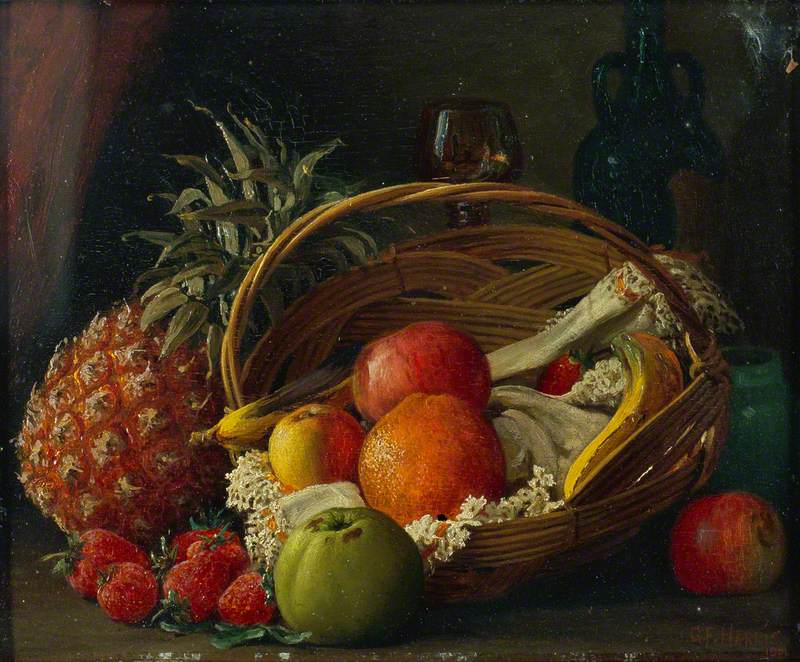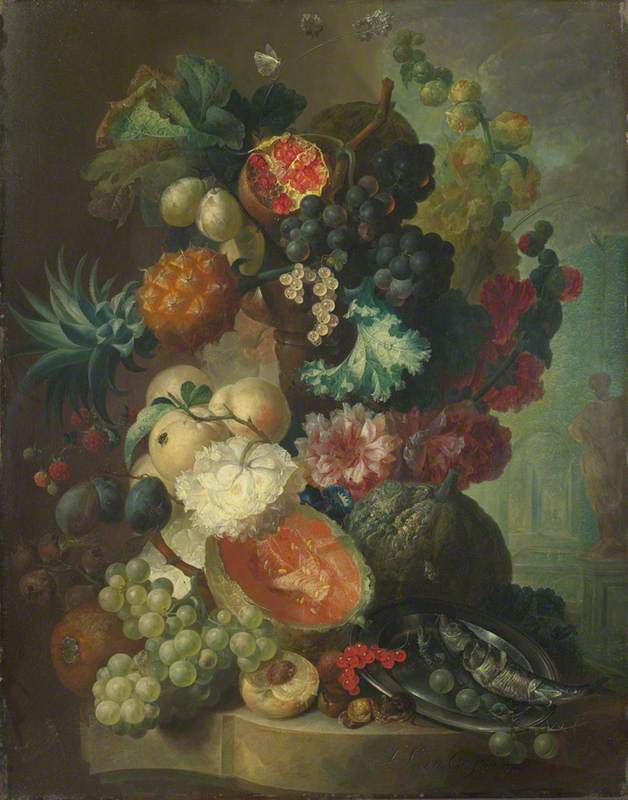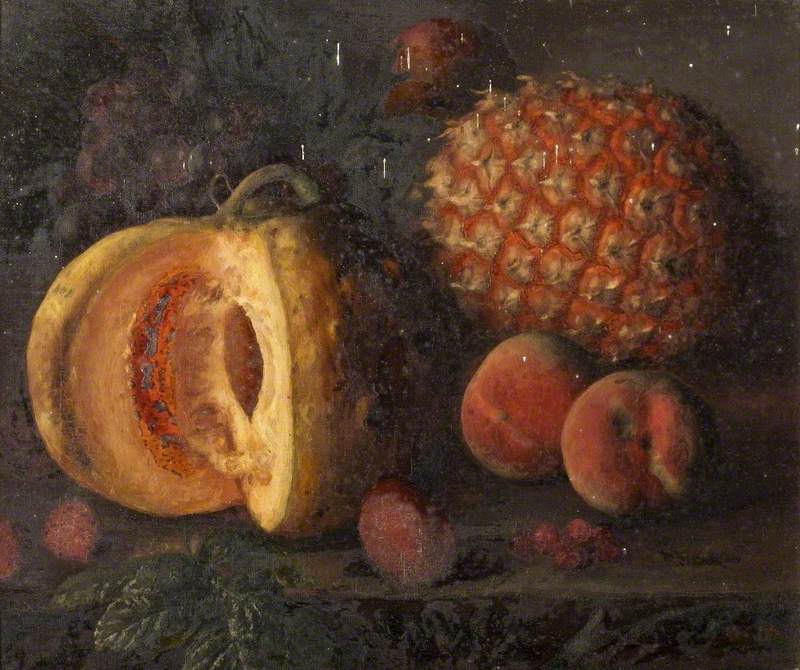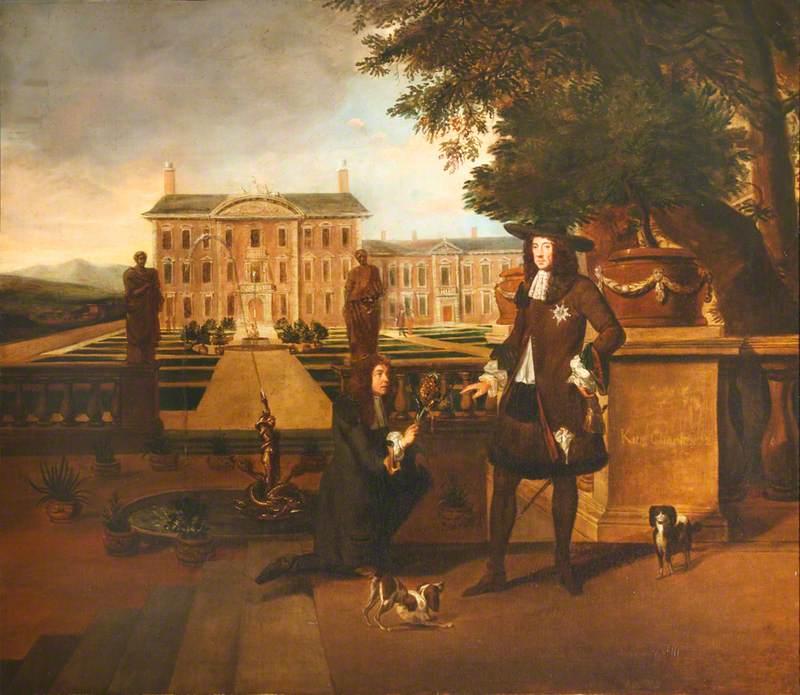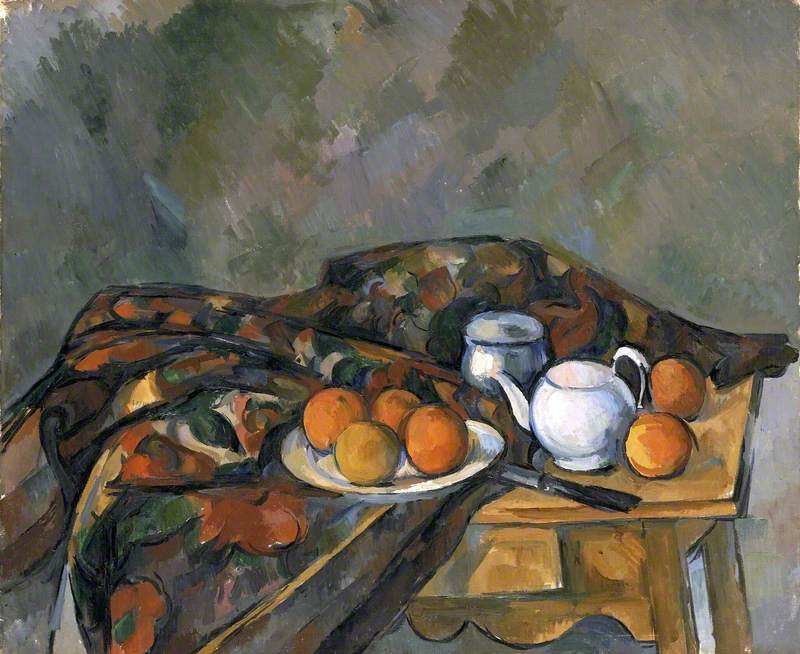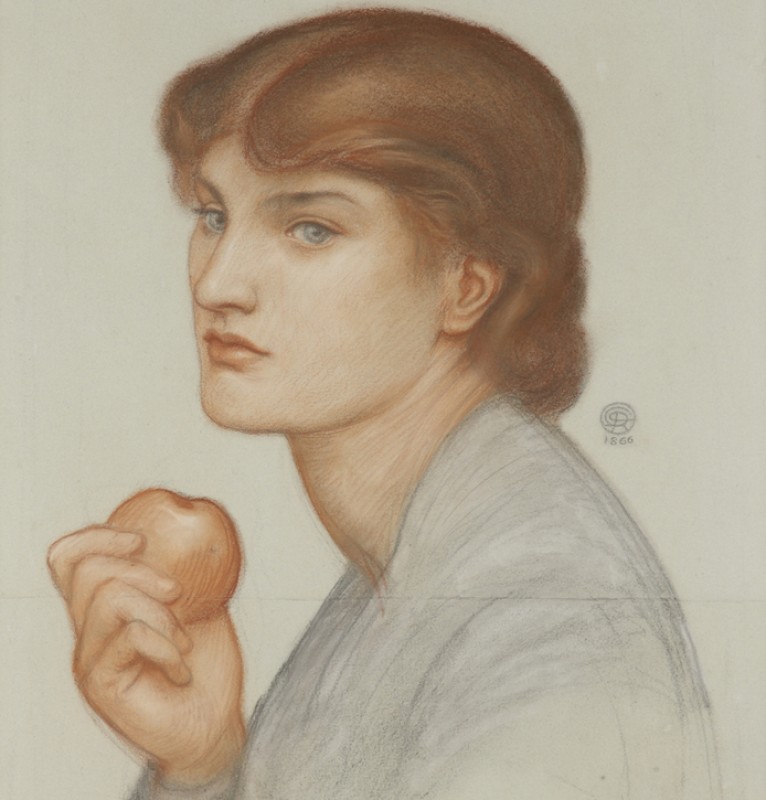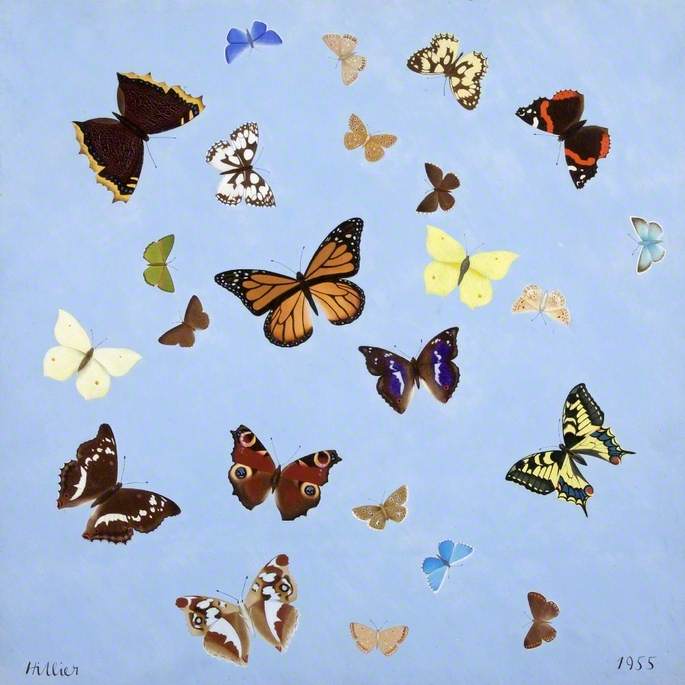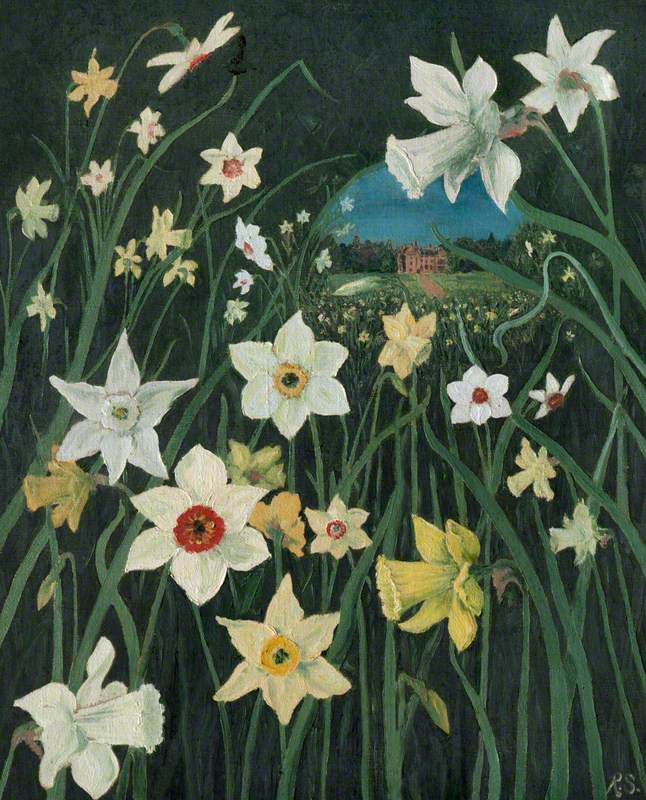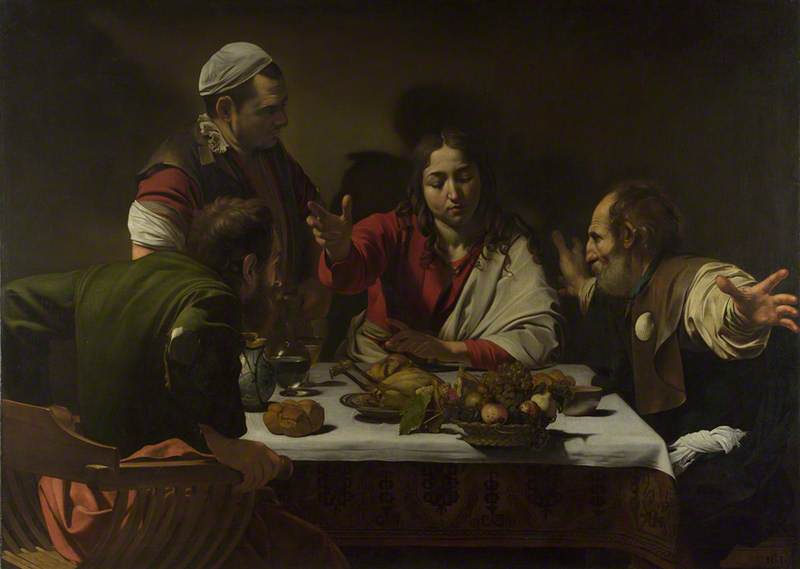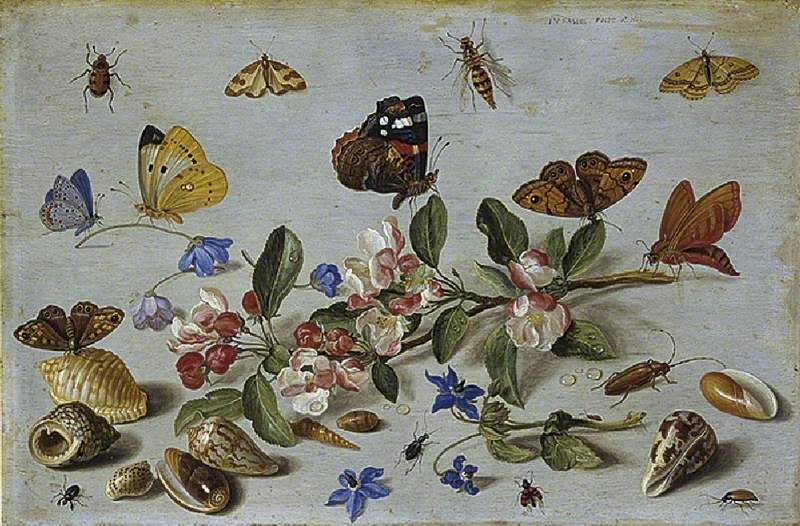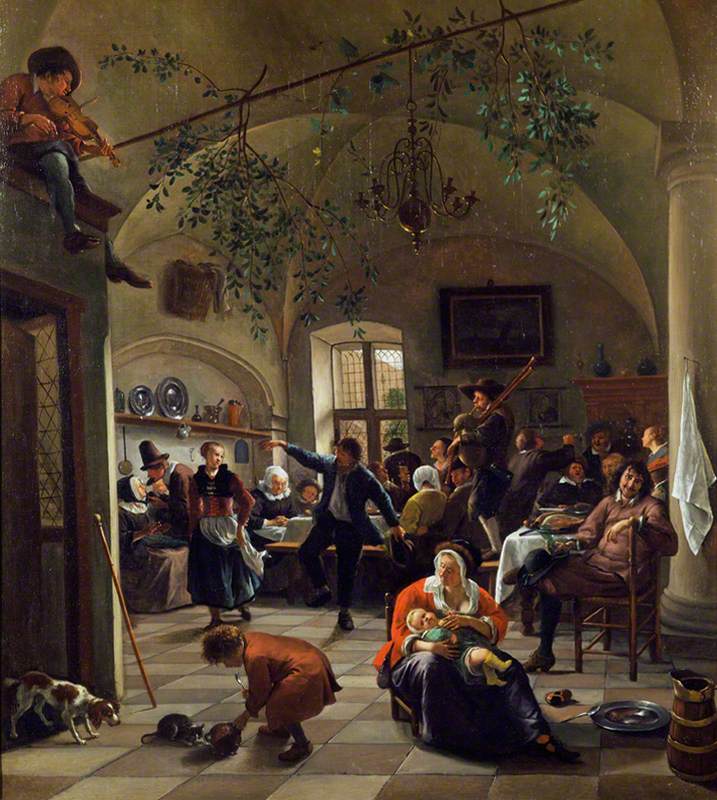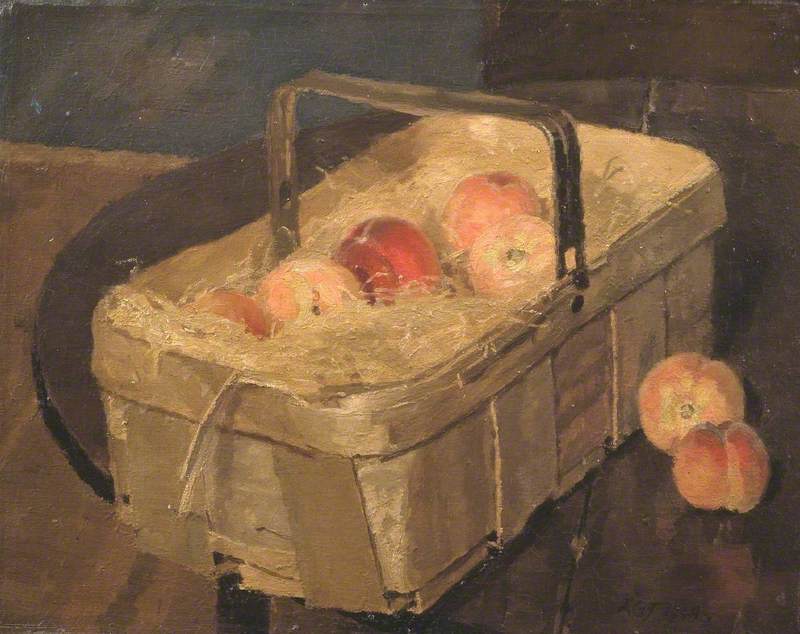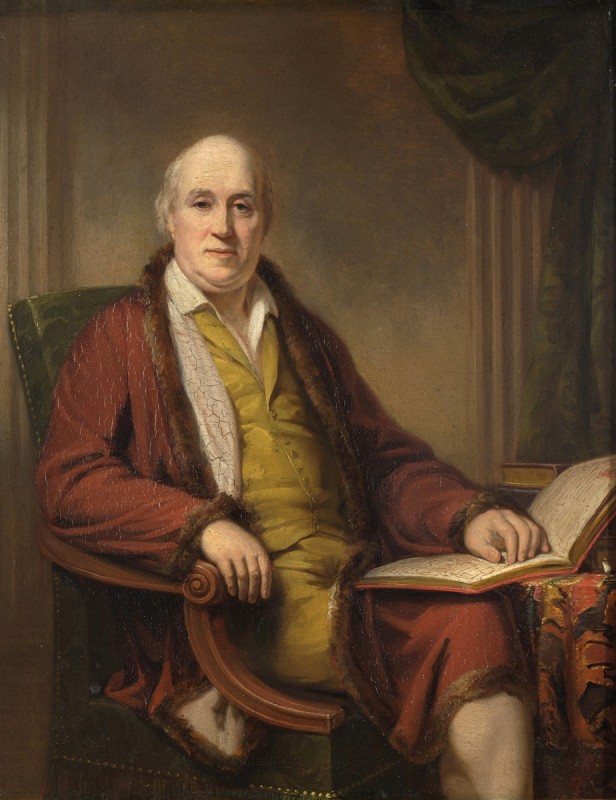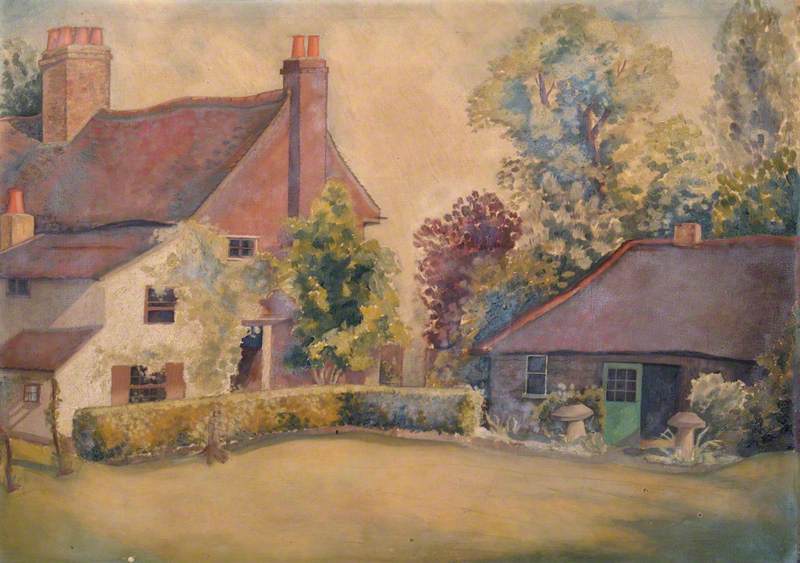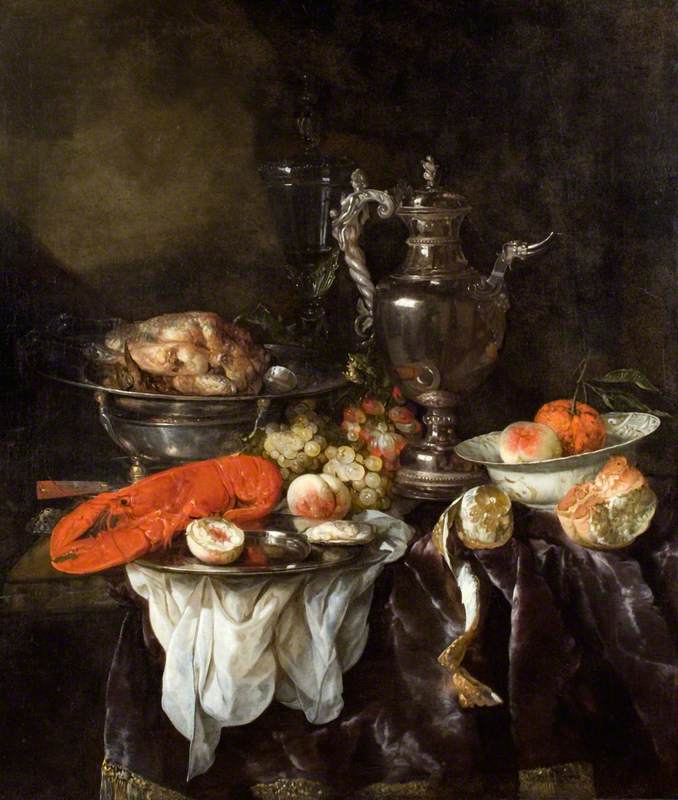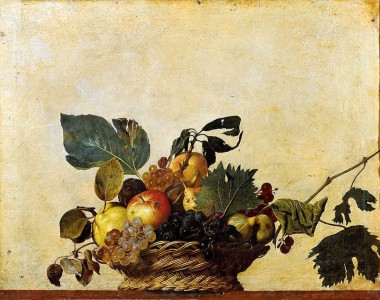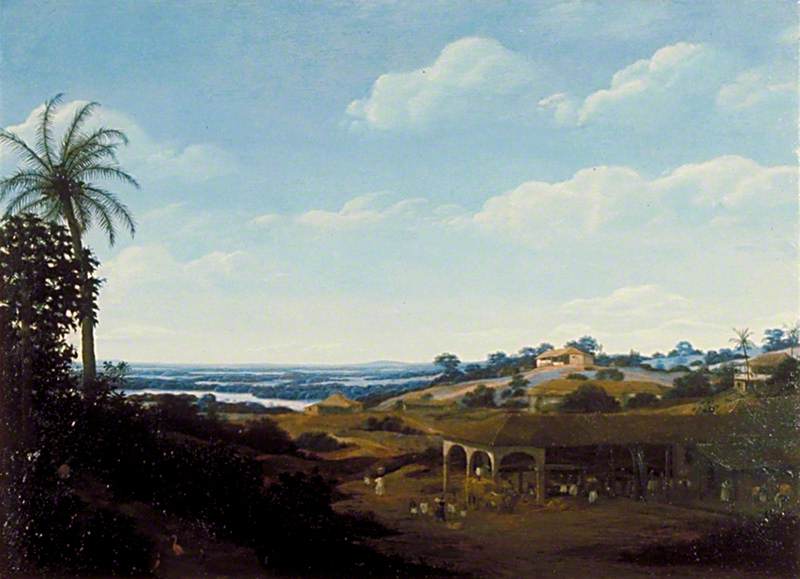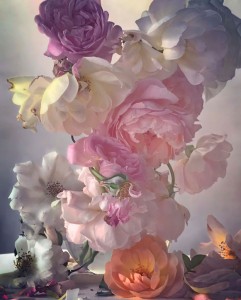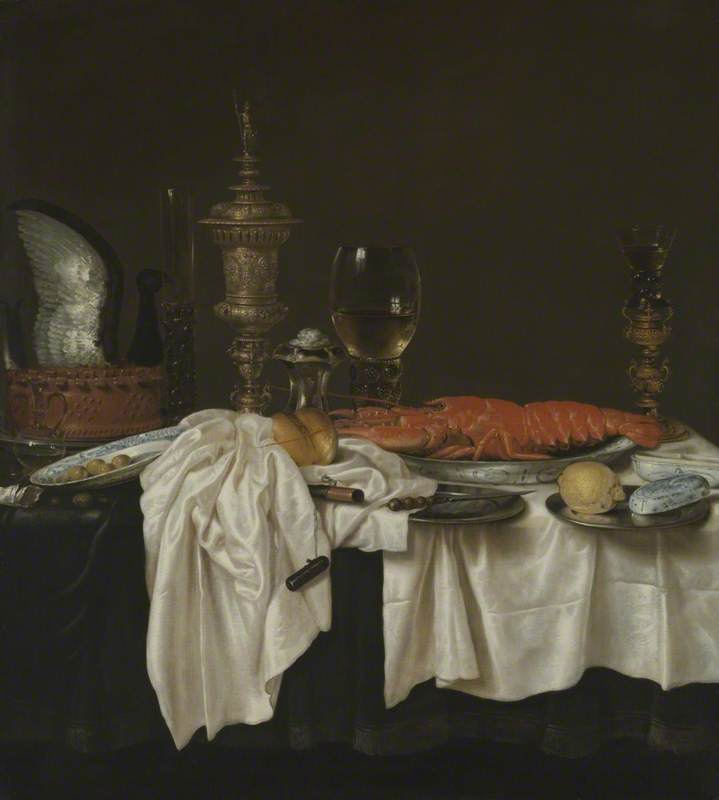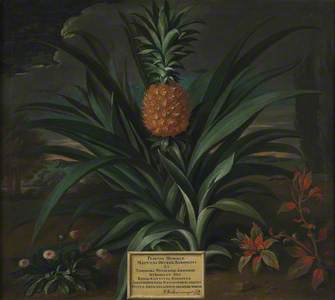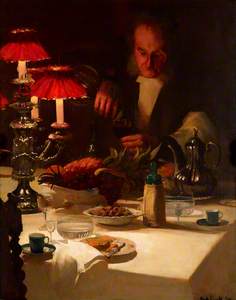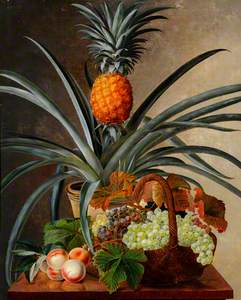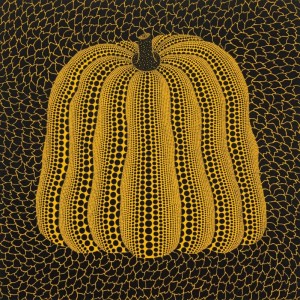Whether you slice it, dice it, drink it, juice it, can it, or put it on a pizza (you monsters), the pineapple is a delicious symbol of all that is wondrous and exotic in life. Originating in the areas now known as Brazil and Paraguay, this iconic fruit has gone on to capture the imaginations and taste buds of all who have come into contact with it. From fifteenth-century explorers to millennial hipsters, the sweet but spiky appeal of the pineapple has proved to be timeless and global.
Pineapple Grown in Sir Matthew Decker's Garden at Richmond, Surrey
1720
Theodorus Netscher (1661–1732) 
In this day and age, we are fortunate to be able to get pineapples all year round for just a couple of pounds, but that wasn't always the case. In the early modern period, at the height of pineapple mania, it was estimated that a single pineapple cost £3,000 to produce. This was because you weren't able to pop to the shops and pick up a pineapple. In fact, when the first pineapples were brought back from the New World to Spain, only one survived the journey. This was presented to King Ferdinand who, on eating it, declared the rare fruit his favourite amongst all others – a preference that would be hard to satisfy, as he had just eaten the only one in Europe. Yet it was with those words that the pineapple craze began, and similar to now, the best boast would be if you had grown your own – with 'salt-water touched' pineapples worth infinitely less than those that had been grown on European soil.
By the seventeenth century, the cultivating of rare plants was seen as a noble pastime, equal to collecting art and antiquities. A hothouse was a living cabinet of curiosities, with the elusive pineapple at the top of the collector's list. The pineapple craze was fuelled by their rarity and expense, with the best destined for the royal tables of Europe. Loved by kings and aristocrats alike, the pineapple was an early modern emblem of lavish hospitality, celebrated in art, fashion literature and song (and I'm not just talking about Agadoo).
Spanish historian Gonzalo Fernández de Oviedo y Valdés wrote of the pineapple in 1535, declaring: 'my pen and my words cannot depict such exceptional qualities, nor appropriately celebrate this fruit.' Yet from pineapple-shaped teapots in the Victoria and Albert Museum collection to the National Trust, Ham House's copy of a depiction of Charles II being presented with a pineapple, the history of the fruit is as decorative as it is delicious, inspiring generations of makers, writers and artists in a number of unexpected ways.
The Pineapple
Dunmore, Scotland – The Landmark Trust 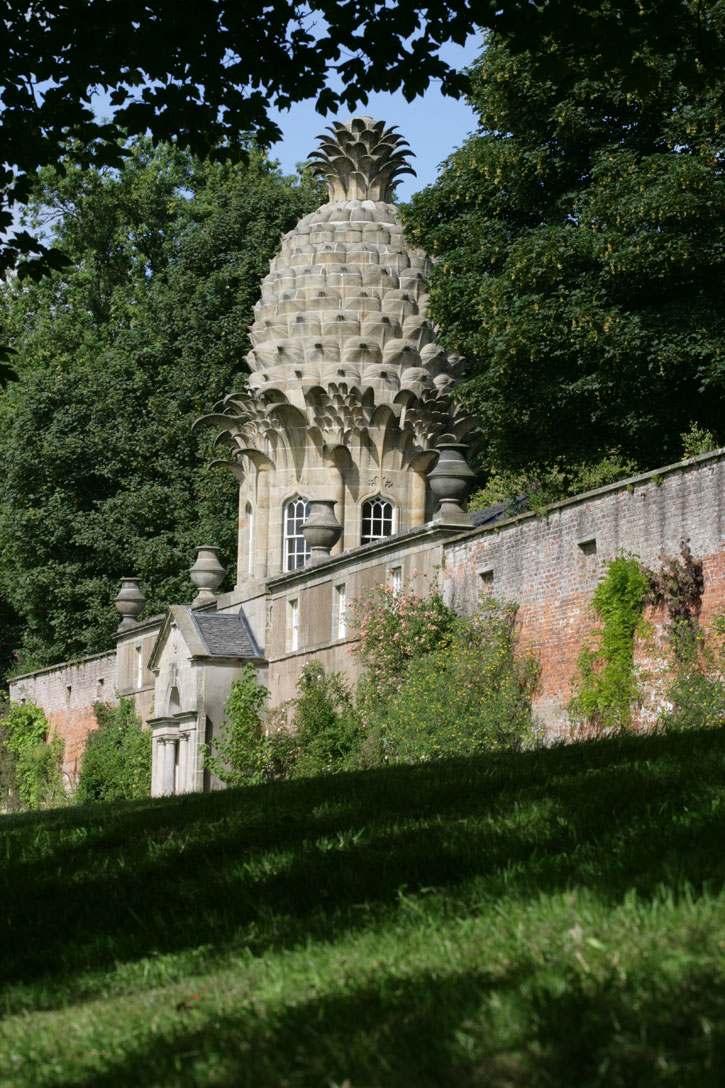
While hothouses on grand estates tried (and often failed) to raise pineapples to fruition, they instead adorned gateposts and friezes as a symbol of welcome and wealth. Growing not from soil but from stone, the pineapple's legacy is as architectural as it is edible, and nowhere is this better seen than at The Pineapple, a folly on the grounds of the Dunmore estate in Scotland, now belonging to The Landmark Trust. This eighteenth-century summerhouse is topped by a giant pineapple-shaped dome and conceals the entrance to a walled garden, where exotic flora were grown. This is not just a pineapple as a decoration, but as a performative, architectural and symbolic marvel – a visual representation of class and power on a grand scale.
Still Life with a Pineapple
c.1886
George Walter Harris (1835–1912) 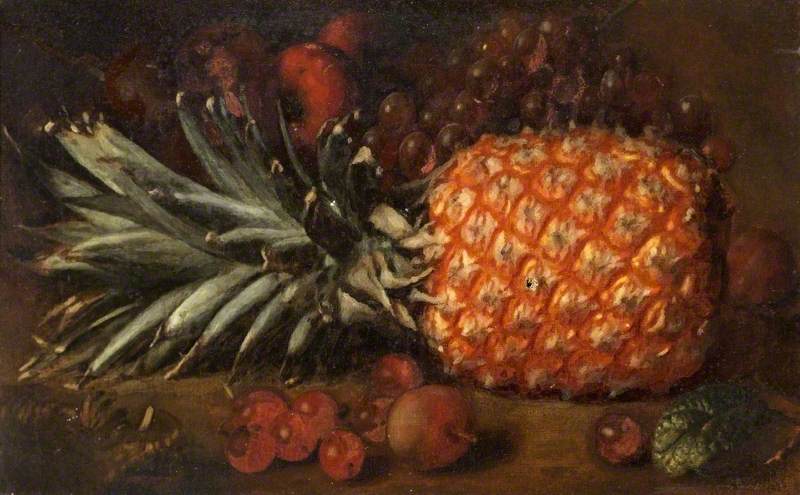
During the eighteenth century, the allegorical applications of the pineapple were particularly powerful. Their role as an emblem of prosperity and hospitality was quite literally set in stone, but the language around them was changing. From the fifteenth to the seventeenth century, pineapples were regularly referred to as the 'King' or 'Prince of fruits', however by the eighteenth century they began to switch gender, with more seductive feminine imagery taking over from the masculine energy that they had initially been attributed with. By the time that Queen Victoria came to the throne in 1837, they were undeniably the 'Queen of Fruits', which makes me wonder whether George Walter Harris's Still Life with a Pineapple (above) was, in fact, a little dig at overthrowing the Queen, its regal, fruity form shown laying limp on its side.
The Butler Takes a Glass of Port (All Things Come to the Man That Waits)
1890–1899
Frederick William Elwell (1870–1958) 
But Queen Victoria aside, what is clear is that in the nineteenth century the cult of the pineapple was only going from strength to strength. So extreme was our love of this cluster of fruitlets that you could even rent a pineapple to display at your dinner party, preferably with the leaves and trimmings still attached so it looked like you had grown it in your greenhouse. Yet, much like rented fine silver and china, it had to be returned afterwards. So next time you go to a housewarming, leave the flowers at home and bring a pineapple instead – it's a historical reference after all.
Tasha Marks, food historian, artist, and founder of AVM Curiosities

